



SQL Server 2017: SQL Sort, Spill, Memory and Adaptive Memory Grant Feedback
April 27, 2018This article explores SQL Sort, Spill, Memory and Adaptive Memory Grant Feedback mechanism in SQL Server.
Read more »
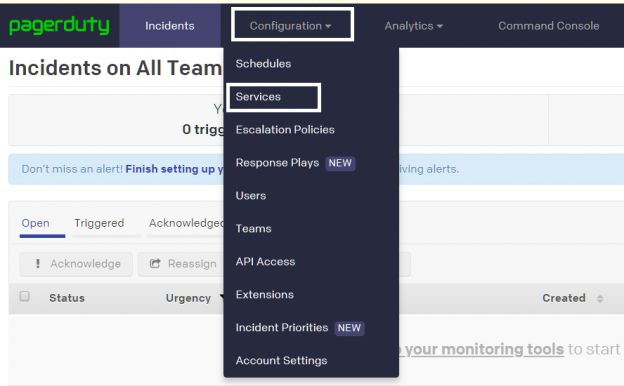
Integrating Azure SQL database alerts into Slack
April 27, 2018Database administrators have a lot of tasks and responsibilities but perhaps the most challenging task is performance tuning. Because performance tuning issues can cause huge problems in the business area, database administrators have to monitor performance metrics and have to get immediate, if not sooner, notifications when the performance values cross an optimal state. Generally, this notification comes by e-mail.
Read more »
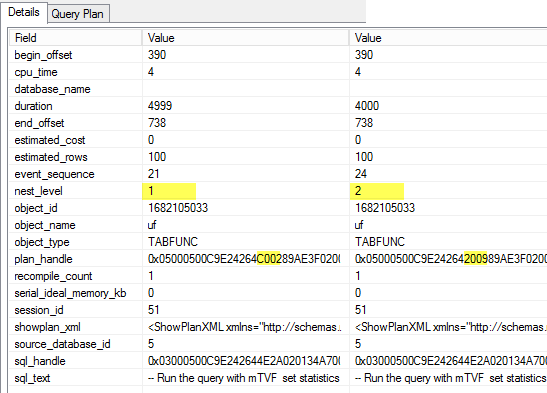
SQL Server 2017: Interleaved Execution for mTVF
April 27, 2018In this post, we are going to look at the new feature in SQL Server 2017 – interleaved execution. You need to install SQL Server 2017 CTP 1.3 to try it, if you are ready, let’s start.
Now, when a CTP 2.0 of SQL Server 2017 is out, you don’t need to turn on the undocumented TF described further, and the plans are also different, so the examples from this post use CTP.1.3, probably not actual at the moment (I was asked to hold this post, until the public CTP 2 is out, and interleaved execution is officially announced). However, the post demonstrates Interleaved execution details and might be still interesting.
Read more »

4K resolution and high DPI: What you need to know about it to have great visuals
April 26, 20184K resolution, AKA Ultra HD, refers to a horizontal screen display resolution in the order of approximately 3,840 pixels. On two-dimensional display devices such as computer monitors, it represents display resolution of 3840×2160 pixels which is four times as many pixels as regular Full High Definition (1920×1080). What this means for users is the more pixels per inch (PPI) the higher resolution on the monitor. In other words, you can be closer to the monitor and still enjoy a crisp, clear picture.
Read more »
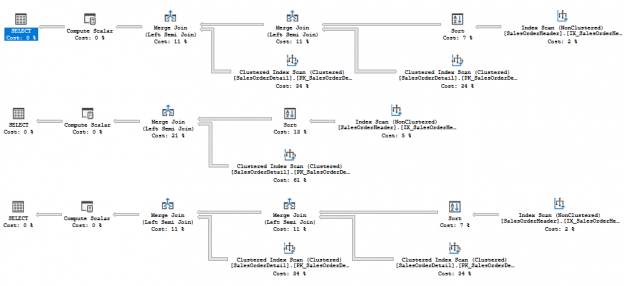
SQL Server 2017: Scalar Subquery Simplification
April 26, 2018Nowadays a lot of developers use Object-Relational Mapping (ORM) frameworks. ORM is a programming technique that maps data from an object-oriented to a relational format, i.e. it allows a developer to abstract from a relational database (SQL Server, for example), use object-oriented language (C#, for example) and let an ORM to do all the “talks” to a database engine by generating query texts automatically. ORMs are not perfect, especially if they are used in a wrong way. Sometimes they generate inefficient queries, e.g. a query with redundant expressions. SQL Server has a mechanism to struggle with that inefficiency called a query simplification.
Read more »

Backup and Restore (or Recovery) strategies for SQL Server database
April 26, 2018One of the most important roles of a database administrator is to constantly protect the integrity of the databases and maintain the ability to recover quickly in case of a failure. In light of this, it’s critically important to have a backup-and-recovery strategy in place in order to be ready for an emergency.
A key responsibility of a database administrator is to ensure that a database is available whenever it’s needed, and prepare for various scenarios wherein the availability or the performance is impacted. Therefore, if a database, for whatever reason, gets corrupted, gets dropped, gets accidentally deleted, or goes into an unusable state, it is a database administrator’s responsibility to bring the database back up in a working state with little to no loss as per the defined service level agreements or government policies.
Read more »
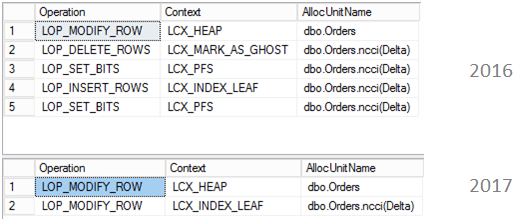
SQL Server 2017: Columnstore in-place updates
April 26, 2018In this post, I continue the exploration of SQL Server 2017 and we will look at the nonclustered columnstore index updates.
Columnstore index has some internal structures to support updates. In 2014 it was a Delta Store – to accept newly inserted rows (when there will be enough rows in delta store, server compresses it and switches to Columnstore row groups) and a Deleted Bitmap to handle deleted rows. In 2016 there are more internal structures, Mapping Index for a clustered Columnstore index to maintain secondary nonclustered indexes and a deleted buffer to speed up deletes from a nonclustered Columnstore index.
Updates were always split into insert + delete. But that is now changed, if a row locates in a delta store, now inplace updates are possible. Another change is that it is now possible to have a per row (narrow) plan instead of per index (wide) plan.
Let’s make some experiments.
Read more »

Top SQL Server Books
April 25, 2018If you know of a book that deserves to make this list, please let us know in the comments below.
Read more »

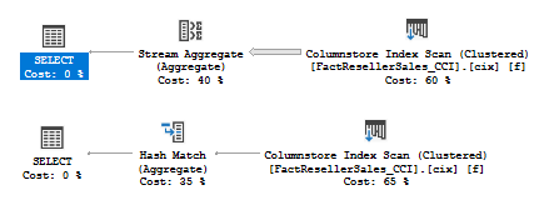
SQL Server 2017: Columnstore Indexes and Trivial Plan
April 25, 2018Some time ago, SQL Server 2017 was released and issued as CTP. The most exciting release in that CTP was that SQL Server now supports Linux! This is awesome and I consider it to be great news for many people.
I am personally interested in the new features of query processing, and finally I had some time to install the SQL Server 2017 and dig a little bit into it. Currently, it is CTP 1.2 available, and I will use this version for my experiments.
While exploring new extended events, I’ve found an interesting event compilation_stage_statistics and one of the columns of this event was trivial_plan_scanning_cs_index_discarded with the following description “Number of trivial plans discarded or could have been discarded which scan Columnstore index”. That pushed me to do some investigations of the topic.
Read more »
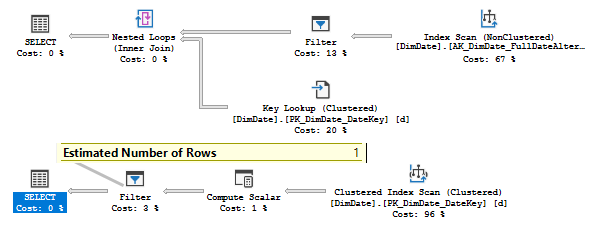
SQL Server 2016: Scalar UDF Estimation and Project Normalization
April 25, 2018In this post, we will continue to look at the cardinality estimation changes in SQL Server 2016. This time we will talk about scalar UDF estimation. Scalar UDFs (sUDF) in SQL Server have quite bad performance and I encourage you try to avoid them in general, however, a lot of systems still use them.
Scalar UDF Estimation Change
I’ll use Microsoft sample DB AdventureworksDW2016CTP3 and write the following simple scalar function, it always returns 1, regardless of the input parameter. I run my queries against Microsoft SQL Server 2016 (SP1) (KB3182545) – 13.0.4001.0 (X64)
Read more »

Troubleshooting Database Mail Failures
April 25, 2018Description
Database Mail is a convenient and easy way to send alerts, reports, or data from SQL Server. Failures are not obvious to the us though, and developing a process to monitor these failures alongside other failures will save immense headaches if anything ever goes wrong.
Database Mail: a (very) brief overview
Database Mail is a component of SQL Server that is available in every edition, except for Express. This feature is designed to be as simple as possible to enable, configure, and use.
Database Mail relies on SMTP to send emails via a specified email server to any number of recipients. When configuring, you provide a mail server, credentials (if needed), and then the service is ready to use. We’ll be focusing here on failure reporting and not configuration. If you need help setting up or configuring this feature, check out some of the references at the end of this article.
Read more »
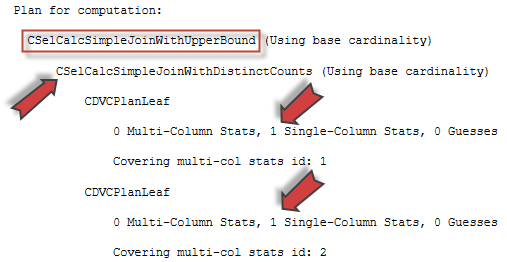
Join Estimation Internals in SQL Server
April 24, 2018In this post we continue looking at the Cardinality Estimator (CE). The article explores some join estimation algorithms in the details, however this is not a comprehensive join estimation analysis, the goal of this article is to give a reader a flavor of join estimation in SQL Server.
The complexity of the CE process is that it should predict the result without any execution (at least in the current versions), in other words it should somehow model the real execution and based on that modeling get the number of rows. Depending on the chosen model the predicted result may be closer to the real one or not. One model may give very good results in one type of situations, but will fail in the other, the second one may fail the first set and succeed in the second one. That is why SQL server uses different approaches when estimating different types of operations with different properties. Joins are no exception to this.
Read more »
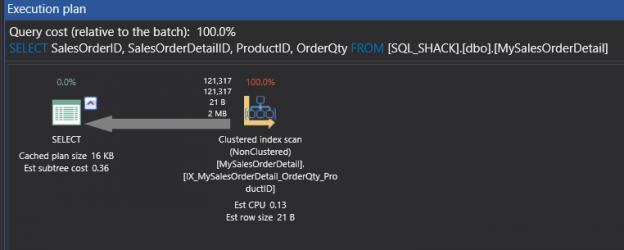
SQL Server Query Execution Plans for beginners – NON-Clustered Index Operators
April 24, 2018Now that we understand what Clustered Index Scan and Clustered Index Seek are, how they occur, and how to eliminate table scans in my previous article SQL Server Query Execution Plans for beginners – Clustered Index Operators, the next topic would be looking at Non-Clustered Indexes
Read more »
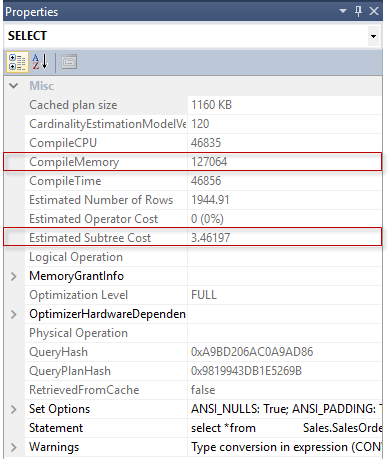
Query Plan on a busy SQL Server
April 24, 2018Yesterday I came across a question on one of SQL forums, that I may rephrase like:
“Does a query plan compilation depend on how busy SQL Server is”.
Before we go further, I should explicitly mention that we talk about a Compiled plan, not an Executable plan. Plan execution will of course depend on how busy server is, for example, the query may wait for the memory grant to start execution, or execution may be slow because there are no cached pages in the Buffer Pool etc.
However, the question was about a Compiled plan: does the shape of a plan depend on the server load.
From the first glance it should not. But…
Read more »
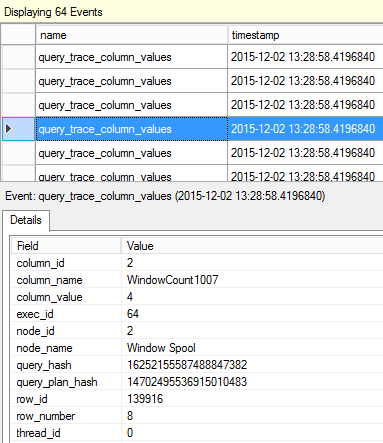
Query Trace Column Values in SQL Server
April 23, 2018Sometimes, when I saw expressions like ‘Expr1002’ or ‘WindowCount1007’ or something similar in the columns Output List of a query plan, I asked myself, is there a way to project those columns into the final result to look at the values. That question first came to me out of curiosity when I was playing with window aggregate functions and a Window Spool plan operator in SQL Server 2012, I wanted to look into the Window Spool to understand, how it performs an aggregation.
Interestingly, that SQL Server 2016 CTP3.0 allows us to look deep inside into the iterator and observe the data flowing through it. Let’s turn on an “x-ray machine” and take a look.
Read more »
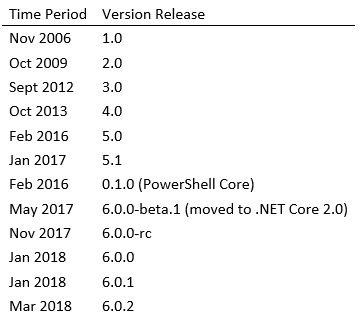
Learning PowerShell and SQL Server – Introduction
April 23, 2018Introduction
This article is the first step among many that I hope will help give you a foundation of knowledge to get started utilizing PowerShell. The focus in these steps will be specific to using PowerShell with SQL Server, but I have to cover some of the basic things. Which once you grasp the basics of PowerShell and using it, in a general sense, you set yourself up for easily learning how to use it with other products.
In this article I’m going to touch on the following items:
- History Lesson (short reference for a timeline on releases)
- Windows PowerShell vs PowerShell Core
- SQL Server and PowerShell (as it is today)
- Terminology (some terms that help to understand)
- PowerShell Editors

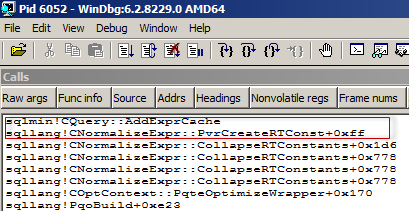
Runtime Constants Sniffing in SQL Server
April 23, 2018Most of the people know about the so-called “Parameter Sniffing”. This topic was discussed in many aspects in a number of great articles. It is interesting that not only parameters might be “sniffed” during the first execution, but also a runtime constant functions. Let’s look at the example.
Test Data
I will use a test server and administrator account to run the script below, be sure you have enough privileges on your test server if you want to try out the script below.
Read more »

Data science in SQL Server: Data analysis and transformation – binning a continuous variable
April 23, 2018I started to explain the data preparation part of a data science project with discrete variables. As you should know by now, discrete variables can be categorical or ordinal. For ordinal, you have to define the order either through the values of the variable or inform about the order the R or the Python execution engine. Let me start this article with Python code that shows another way how to define the order of the Education variable from the dbo.vTargetMail view from the AdventureWorksDW2016 demo database.
Read more »
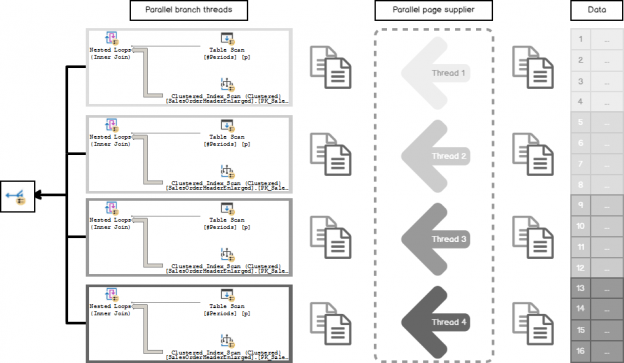
Few Outer Rows Optimization in SQL Server
April 20, 2018In this blog post, we will look at one more Nested Loops (NL) Join Post Optimization Rewrite. This time we will talk about parallel NL and Few Outer Rows Optimization.
For the demonstration purposes, I will use the enlarged version of AdventureWorks2014. In the sample query, I will also use the trace flag (TF) 8649 – this TF forces parallel plan when possible and is very convenient here, as we need one for the demo. There are also a few other undocumented TFs: TF 3604 – direct diagnostic output to console, TF 8607 – get a physical operator tree, before Post Optimization Rewrite, TF 7352 – get a tree after Post Optimization Rewrite phase.
The sample query is asking for some data based on the period’s table.
Read more »

SQL Server index operations
April 19, 2018In the previous articles of this series, we described the structure of the SQL Server tables and indexes, the main concepts that are used to describe the index and the basics and guidelines that are used to design the proper index. In this article, we will go through the operations that can be performed on the SQL Server indexes.
Creating Indexes
Before creating an index, it is better to follow the index design guidelines and best practices that are described in the previous article, to determine the columns that will participate in the index, the type of the created index, the suitable index options, such as the FillFactor or Sort in TempDB, and the storage location of that index.
Read more »
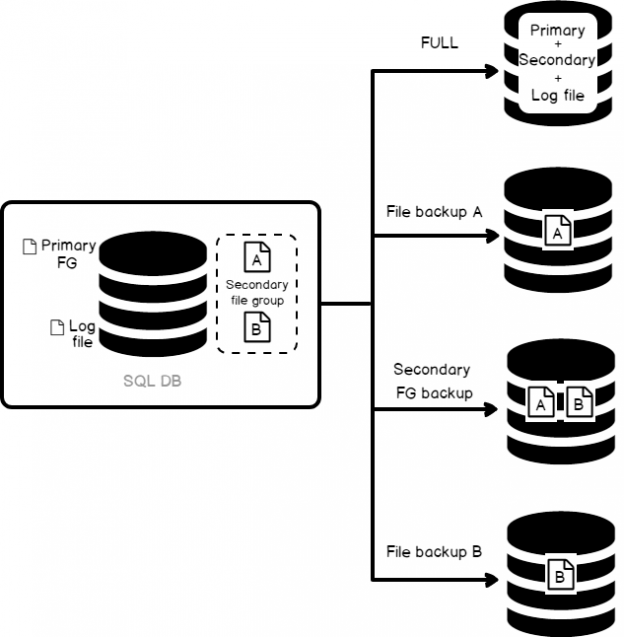
Understanding SQL Server Backup Types
April 19, 2018SQL Server backups, in itself, is a vast subject; so vast, there are multiple books written about them. In this article, however, we are going to focus on the types of backups that are available to us, and understand how to pick what we need, and what aspects we base that decision on. This understanding would, in turn, help us decide our backup-and-restore strategy.
Following are the most common types of backups available in SQL Server:
- Full
- Differential
- Transaction log
- Tail Log backup


Batch Sort and Nested Loop in SQL Server
April 18, 2018Continuing my blog post series after 24HOP Russia “Query Processor Internals – Joins”. In this (and the next one) blog post, we will talk about the Nested Loop Post Optimization Rewrite optimizations.
Some of you may know that a Nested Loop join algorithm preserves order of the outer table.
Read more »
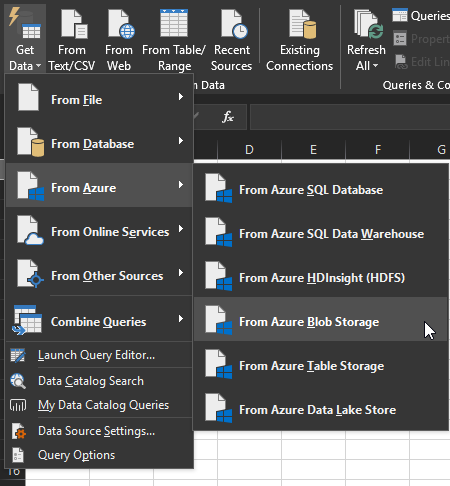
How to connect and perform a SQL Server database restore from Azure BLOB storage
April 18, 2018Having things in the cloud should make life simpler but I have experienced it’s not that straightforward. Once all access / configuration is sorted out then yes, of course! But in the meantime it can be tedious (even frustrating) and the end result is something that could have been achieved with a different method.
I think a significant chunk of what Azure offers is easier to do with the more conventional methods but that separates us from the advanced Azure features that a company would like to utilize in the shorter / longer term future. So there are reasons to spend some time / effort in getting things right up there.
In my case the task I needed to accomplish sounded simple enough:
- get a SQL Server database backup (.bak file) from Azure blob storage
- copy it to our own environment and restore it to a SQL Server instance on an Azure Windows VM
- or skip the copy step and restore straight from blob storage

How to identify and monitor unused indexes in SQL Server
April 17, 2018SQL Server indexes are essentially copies of the data that already exist in the table, ordered and filtered in different ways to improve the performance of executed queries. Seeks, scans and lookups operators are used to access SQL Server indexes.
Read more »